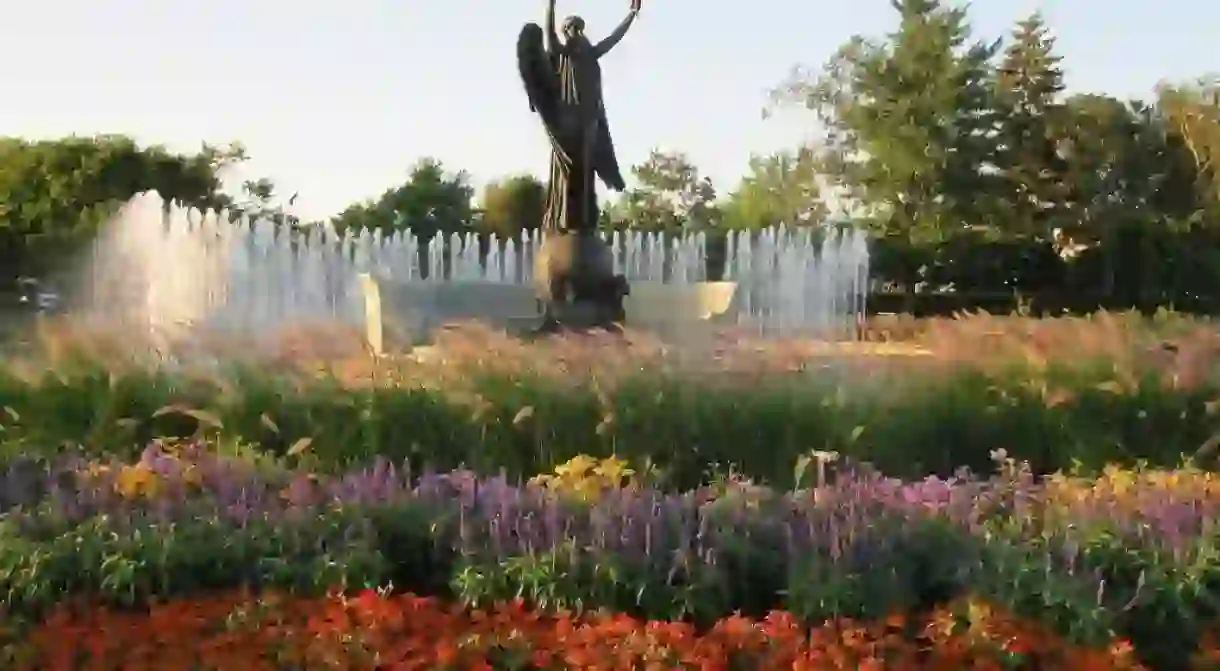A Quick Tour of Toronto's Statues and Sculptures

Toronto houses countless statues and sculptures, many of which are incorporated into monuments that honor important historical moments for the city and the people who have come to call it home. Here are just a few of the iconic statues you’ll see while walking through different areas of Toronto.
Monument to Multiculturalism
Located downtown on Front Street close to Union Station, Francesco Perilli’s Monument to Multiculturalism was commissioned by the National Congress of Italian Canadians in 1985. With the city priding itself on being a multicultural mecca, this sculpture, cast in bronze, is particularly representative of what Toronto aims to stand for. In Perilli’s own words, the monument is “symbolically meant to represent the cultural vitality of the people who… construct a new world, under the banner of dialogue and mutual respect.”

Four identical sculptures are also in the cities of Buffalo City, South Africa; Changchun, China; Sarajevo, Bosnia; and Sydney, Australia—linking diverse and far-flung locations through a similar value and mission.
Inukshuk
The Toronto Inukshuk, commissioned for World Youth Day in 2002, represents an important symbol of Canada’s Aboriginal peoples. A stone structure often found in the arctic landscapes of the Inuit, the Inukshuk is intended to be a guide for travelers on land and sea, offering spatial orientation as well as comfort and advice. Made by the world-renowned Inuit artist Kellypalik Qimirpik from Cape Dorset, Nunavut, this statue is one of the largest of its kind in North America. It stands at 30 feet (9.1 meters) high with an arm span of 15 feet (4.6 meters), and around 50 tons of mountain rose granite was used to construct it.

Immigrant Family
Situated on Yonge Street since 2007, Immigrant Family, by the popular American sculptor Tom Otterness, is a bronze structure that portrays a newly arrived father—holding suitcases—and mother who is holding a baby. Measuring 10 feet high x 10 feet long x 9 feet wide (3 x 3 x 2.7 meters), both parents are looking affectionately at their child, who is looking beyond them, toward the future. Both playful and political, the sculpture depicts an immigrant experience to which many, if not most, Torontonians can relate in terms of their own family experiences—past or present.

South African War Memorial
This one is hard to miss if you’re downtown. Located on University Avenue and Queen Street West, the South African War Memorial, created by Walter Seymour Allward (1876-1955), was erected in 1910. Restored in 2001, it commemorates Canada’s participation in the Boer War. Three bronze figures are at the base of a granite column, and another celebratory bronze figure rises from the top. Every February 27th for two decades after the war, people would gather around Boer War memorials like this one in order to honor veterans—until Remembrance Day started to be officially observed every November 11th after the First World War.

Toronto Irish Famine Memorial
Revealed in 2007, the Toronto Irish Famine Memorial is located downtown in Ireland Park. Created by Irish artist and sculptor Rowan Gillespie, the memorial involves a series of haunting life-sized bronze sculptures of famine migrants making their final landing in Canada. Along with a large limestone wall imported from Kilkenny that features over 1,100 names of migrants who died in Toronto’s 1847 Typhus epidemic, the statues honor the 38,000 Irish Great Famine immigrants who arrived in Toronto in 1847.

To explore the numerous statues scattered throughout the city, you can check out the Toronto Sculpture database. The Royal Ontario Museum also hosts ROMWalks, which are guided walking tours of the historical and artistic features of specific neighborhoods through the downtown area, for only $10 per person.













